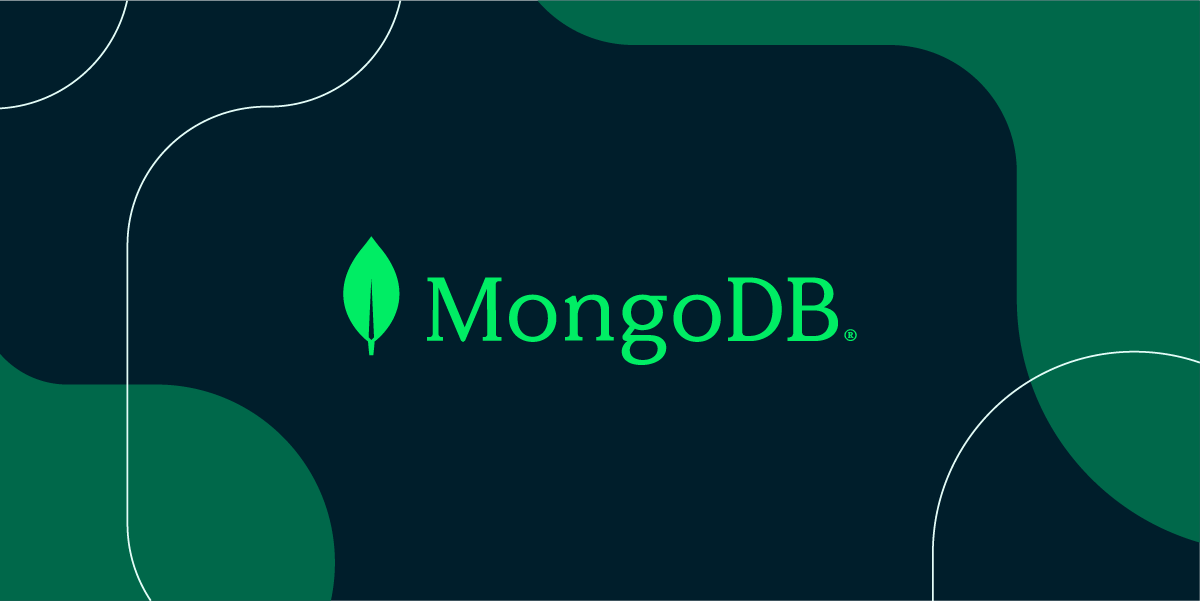MongoDB's flexibility does not mean abandoning data integrity. By combining built-in document verification, reasonable verification behavior control, progressive mode evolution, application-level verification and automated monitoring, a robust architecture that takes into account flexibility and data quality can be built. 1. Use collection-level document verification ($jsonSchema) to ensure compliance with required fields, data types, value ranges and enumeration values; 2. Control the execution method and scope of verification through validationAction ("error" or "warn") and validationLevel ("strict" or "moderate"), and support alerts and then mandatory during migration; 3. Adopt incremental mode evolution strategies, such as adding optional fields first, introducing schemaVersion identification version, and backfilling old data before strengthening verification; 4. Verify input in advance at the application layer (such as using Joi, Zod and other tools), forming a dual guarantee with database verification, improving user experience and preventing illegal data from entering the database; 5. Through logs and monitoring tools (such as MongoDB Atlas, Prometheus) tracking verification failed, script audit non-compliance documents, and integrate mode inspection in CI/CD to achieve continuous governance. Finally, while maintaining MongoDB's flexibility, we will establish necessary data protection mechanisms to ensure data consistency and system maintainability in the production environment.

MongoDB is a flexible, schema-less NoSQL database, which means documents in a collection can have varying structures. While this flexibility is powerful, it can lead to data inconsistency, especially in production environments with multiple services writing to the same database. To maintain data integrity and enforce structure, robust schema validation becomes essential—even in a schema-flexible system like MongoDB.

Here's how to implement effective schema validation in MongoDB using built-in features and best practices.
1. Use MongoDB's Document Validation (schema validation at the collection level)
MongoDB supports document-level validation through the validator option when creating or modifying a collection. You can define rules using standard query operators ( $type , $regex , $required , etc.) inside a JSON schema-like structure.

Example: Enforcing a User Schema
db.createCollection("users", {
validator: {
$jsonSchema: {
bsonType: "object",
required: ["name", "email", "age"],
properties: {
name: {
bsonType: "string",
description: "Name must be a string and is required"
},
email: {
bsonType: "string",
pattern: "^[a-zA-Z0-9._% -] @[a-zA-Z0-9.-] \\.[a-zA-Z]{2,}$",
description: "Email must be valid and is required"
},
age: {
bsonType: "int",
minimum: 18,
maximum: 120,
Description: "Age must be an integer between 18 and 120"
},
status: {
enum: ["active", "inactive", "suspended"],
Description: "Status must be one of the allowed values"
}
}
}
}
});This ensures:
- Required fields are present.
- Data types are correct.
- Values meet format or range constraints.
- Fields like
statusare restricted to predefined values.
? Note: By default, validation only applies to inserts and updates that modify the specified fields. To enforce validation on all operations, use
validationLevel: "strict".
2. Control Validation Behavior with validationAction and validationLevel
You can fine-tune how MongoDB handles invalid documents using two key options:
validationAction: What to do when a document fails validation.-
"error"(default): Rejects invalid writes. -
"warn": Allows invalid writes but logs a warning.
-
validationLevel: When to apply validation.-
"strict"(default): Applies to all inserts and updates. -
"moderate": Applies only to existing documents and only for fields defined in the validator.
-
Example: Apply Validation in Stages
During migration or schema evolution, you might want to log issues before enforcing strict rules:
db.runCommand({
collMod: "users",
validator: { /* your schema */ },
validationAction: "warn",
validationLevel: "strict"
}); Later, switch to "error" once apps are compliant.
3. Handle Schema Evolution Gracefully
Unlike rigid RDBMS schemas, MongoDB allows incremental changes. But you still need to manage schema changes safely.
Strategies:
- Additive Changes First : Introduction new required fields with default values or make them optional initially.
- Use Versioning : Add a
schemaVersionfield to documents to track which validation rules apply. - Backfill Data : Update existing documents to meet new requirements before tightening validation.
Example: Versioned Schema Handling
{
name: "Alice",
email: "alice@example.com",
age: 30,
schemaVersion: 1
} Your application logic (or migration scripts) can check schemaVersion and apply transformations as needed.
4. Complement with Application-Level Validation
Database validation should not replace application-level checks—it should backstop them.
Best Practices:
- Validate input early (eg, in API layers using tools like Joi, Zod, or class-validator).
- Use shared schema definitions between app and DB where possible (eg, TypeScript interfaces MongoDB validator).
- Return meaningful errors to clients.
? Why both layers? Application validation improves UX and performance; DB validation ensures data integrity even if bad data slips through.
5. Automate and Monitor Validation
In production, you need visibility into validation failures.
Recommendations:
- Log validation warnings/errors (especially when using
"warn"mode). - Use monitoring tools (eg, MongoDB Atlas, Prometheus Mongodb Exporter) to track failed writes.
- Write scripts to audit collections for non-conforming documents:
// Find documents that would fail validation
db.users.find({
$or: [
{ email: { $not: /@/ } },
{ age: { $lt: 18 } },
{ name: { $type: "null" } }
]
});- Automate schema linting in CI/CD using tools like
mongo-schema-linteror custom scripts.
Final Thoughts
MongoDB's flexibility doesn't mean abandoning data quality. By combining:
-
$jsonSchemavalidation, - smart
validationAction/validationLevelsettings, - Gradual schema evolution,
- application-level checks, and
- proactive monitoring,
you can build a robust, maintainable schema strategy that scales with your application.
It's not about making MongoDB act like PostgreSQL—it's about using its strengths while enforcing guardrails where it matters.
The above is the detailed content of Implementing Robust Schema Validation in MongoDB. For more information, please follow other related articles on the PHP Chinese website!

Hot AI Tools

Undress AI Tool
Undress images for free

Undresser.AI Undress
AI-powered app for creating realistic nude photos

AI Clothes Remover
Online AI tool for removing clothes from photos.

Clothoff.io
AI clothes remover

Video Face Swap
Swap faces in any video effortlessly with our completely free AI face swap tool!

Hot Article

Hot Tools

Notepad++7.3.1
Easy-to-use and free code editor

SublimeText3 Chinese version
Chinese version, very easy to use

Zend Studio 13.0.1
Powerful PHP integrated development environment

Dreamweaver CS6
Visual web development tools

SublimeText3 Mac version
God-level code editing software (SublimeText3)

Hot Topics
 MongoDB's Future: The State of the Database
Apr 25, 2025 am 12:21 AM
MongoDB's Future: The State of the Database
Apr 25, 2025 am 12:21 AM
MongoDB's future is full of possibilities: 1. The development of cloud-native databases, 2. The fields of artificial intelligence and big data are focused, 3. The improvement of security and compliance. MongoDB continues to advance and make breakthroughs in technological innovation, market position and future development direction.
 MongoDB vs. Oracle: Exploring NoSQL and Relational Approaches
May 07, 2025 am 12:02 AM
MongoDB vs. Oracle: Exploring NoSQL and Relational Approaches
May 07, 2025 am 12:02 AM
In different application scenarios, choosing MongoDB or Oracle depends on specific needs: 1) If you need to process a large amount of unstructured data and do not have high requirements for data consistency, choose MongoDB; 2) If you need strict data consistency and complex queries, choose Oracle.
 Various ways to update documents in MongoDB collections
Jun 04, 2025 pm 10:30 PM
Various ways to update documents in MongoDB collections
Jun 04, 2025 pm 10:30 PM
The methods for updating documents in MongoDB include: 1. Use updateOne and updateMany methods to perform basic updates; 2. Use operators such as $set, $inc, and $push to perform advanced updates. With these methods and operators, you can efficiently manage and update data in MongoDB.
 MongoDB and the NoSQL Revolution
Apr 24, 2025 am 12:07 AM
MongoDB and the NoSQL Revolution
Apr 24, 2025 am 12:07 AM
MongoDB is a document-based NoSQL database designed to provide high-performance, scalable and flexible data storage solutions. 1) It uses BSON format to store data, which is suitable for processing semi-structured or unstructured data. 2) Realize horizontal expansion through sharding technology and support complex queries and data processing. 3) Pay attention to index optimization, data modeling and performance monitoring when using it to give full play to its advantages.
 MongoDB's Purpose: Flexible Data Storage and Management
May 09, 2025 am 12:20 AM
MongoDB's Purpose: Flexible Data Storage and Management
May 09, 2025 am 12:20 AM
MongoDB's flexibility is reflected in: 1) able to store data in any structure, 2) use BSON format, and 3) support complex query and aggregation operations. This flexibility makes it perform well when dealing with variable data structures and is a powerful tool for modern application development.
 How to view all databases in MongoDB
Jun 04, 2025 pm 10:42 PM
How to view all databases in MongoDB
Jun 04, 2025 pm 10:42 PM
The way to view all databases in MongoDB is to enter the command "showdbs". 1. This command only displays non-empty databases. 2. You can switch the database through the "use" command and insert data to make it display. 3. Pay attention to internal databases such as "local" and "config". 4. When using the driver, you need to use the "listDatabases()" method to obtain detailed information. 5. The "db.stats()" command can view detailed database statistics.
 MongoDB vs. Oracle: Document Databases vs. Relational Databases
May 05, 2025 am 12:04 AM
MongoDB vs. Oracle: Document Databases vs. Relational Databases
May 05, 2025 am 12:04 AM
Introduction In the modern world of data management, choosing the right database system is crucial for any project. We often face a choice: should we choose a document-based database like MongoDB, or a relational database like Oracle? Today I will take you into the depth of the differences between MongoDB and Oracle, help you understand their pros and cons, and share my experience using them in real projects. This article will take you to start with basic knowledge and gradually deepen the core features, usage scenarios and performance performance of these two types of databases. Whether you are a new data manager or an experienced database administrator, after reading this article, you will be on how to choose and use MongoDB or Ora in your project
 Commands and parameter settings for creating collections in MongoDB
May 15, 2025 pm 11:12 PM
Commands and parameter settings for creating collections in MongoDB
May 15, 2025 pm 11:12 PM
The command to create a collection in MongoDB is db.createCollection(name, options). The specific steps include: 1. Use the basic command db.createCollection("myCollection") to create a collection; 2. Set options parameters, such as capped, size, max, storageEngine, validator, validationLevel and validationAction, such as db.createCollection("myCappedCollection







